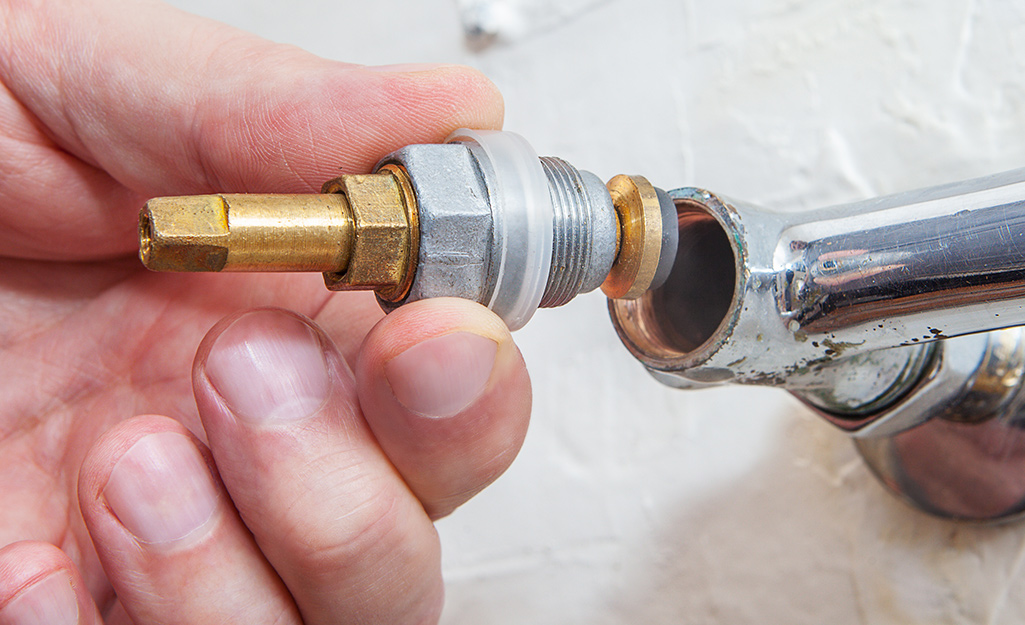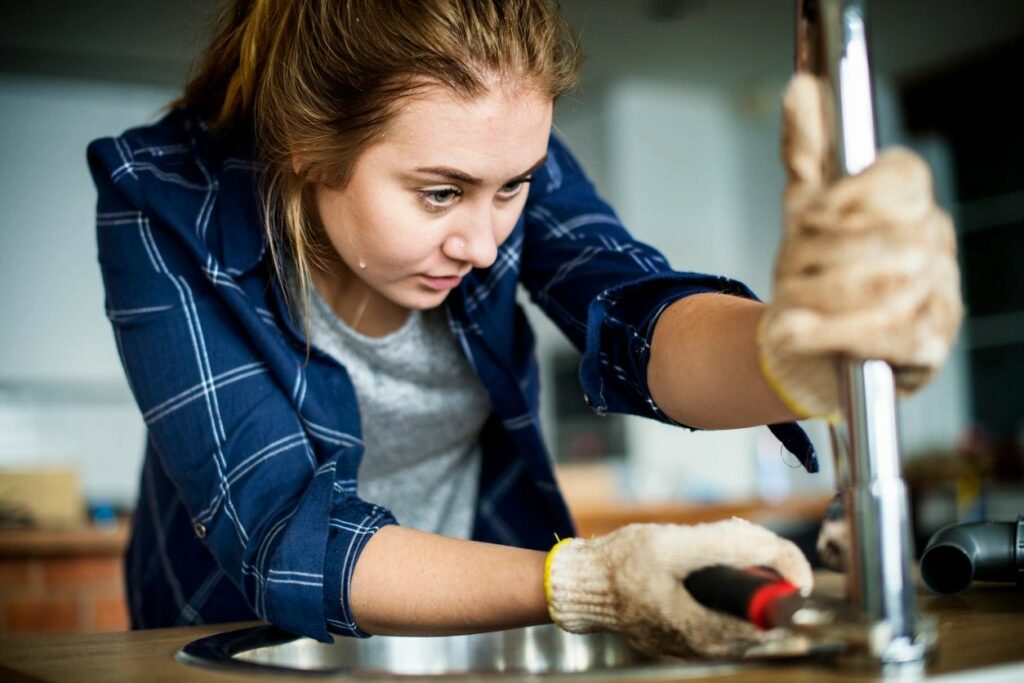We've come across this article on How to Fix a Dripping or Leaky Faucet down the page on the net and think it made sense to discuss it with you on this page.

Trickling faucets may look like a minor aggravation, yet their influence surpasses simply the annoyance of the sound. From drainage to incurring unnecessary monetary prices and health risks, disregarding a leaking faucet can cause different effects. In this article, we'll explore why it's vital to resolve this usual home issue promptly and properly.
Wastefulness of Water
Ecological Influence
Dripping taps add dramatically to water waste. According to the Epa (EPA), a solitary tap leaking at one drip per secondly can lose more than 3,000 gallons of water per year. This not only stress water sources yet also affects ecosystems and wildlife dependent on them.
Financial Prices
Increased Water Expenses
Past the environmental impact, trickling faucets can pump up water costs substantially. The accumulated wastage in time converts right into higher utility expenses, which might have been stayed clear of with prompt repair services.
Prospective Residential Or Commercial Property Damage
Additionally, long term dripping can lead to damage to fixtures and surfaces surrounding the tap. Water buildup can cause discoloration, deterioration, and even architectural problems if left neglected, causing extra repair work costs.
Health Issues
Mold and Mold Development
The consistent existence of moisture from a leaking faucet creates an excellent atmosphere for mold and mold development. These fungi not only jeopardize interior air quality but likewise position wellness risks, specifically for individuals with respiratory conditions or allergies.
Waterborne Diseases
Stationary water in trickling faucets can become a breeding place for germs and various other pathogens, raising the risk of waterborne conditions. Pollutants such as Legionella bacteria flourish in stationary water, possibly bring about serious health problems when consumed or inhaled.
DIY vs. Expert Fixing
Pros and Cons of Do It Yourself Fixing
While some might try to take care of a leaking tap themselves, do it yourself repairs include their own set of obstacles. Without correct understanding and tools, do it yourself attempts can intensify the issue or lead to insufficient repairs, prolonging the trouble.
Benefits of Working With a Specialist Plumber
Working with a specialist plumber ensures that the underlying root cause of the leaking faucet is addressed effectively. Plumbers possess the proficiency and tools to detect and fix tap issues successfully, conserving time and reducing the danger of additional damages.
Step-by-Step Overview to Taking Care Of a Dripping Tap
Tools Required
Prior to trying to deal with a leaking tap, collect the essential devices, consisting of a flexible wrench, screwdrivers, replacement components (such as washing machines or cartridges), and plumber's tape.
Typical Faucet Issues and Their Solutions
Recognize the kind of faucet and the specific problem triggering the drip. Common issues consist of worn-out washers, rusty shutoff seats, or malfunctioning O-rings. Describe manufacturer directions or on the internet tutorials for step-by-step advice on repair services.
Preventive Measures
Routine Upkeep Tips
To stop dripping faucets, perform regular upkeep such as cleansing aerators, examining for leaks, and changing damaged components promptly. Furthermore, consider installing water-saving gadgets or upgrading to extra efficient fixtures.
Relevance of Prompt Repair Works
Addressing leaking taps as soon as they're observed stops more water wastefulness and prospective damage, inevitably conserving both water and money over time.
Effect On Residential Or Commercial Property Value
Perception of Well-Maintained Property
Preserving a residential property in good condition, including resolving maintenance concerns like leaking faucets, boosts its perceived value and desirability among potential buyers or lessees.
Influence on Resale Worth
Properties with properly maintained plumbing components, consisting of faucets, command greater resale worths in the realty market. Addressing trickling taps can add to a favorable impact throughout home evaluations and negotiations.
Environmental Obligation
Specific Payment to Conservation
Taking obligation for repairing dripping taps lines up with more comprehensive initiatives toward water preservation and environmental sustainability. Every person's activities collectively make a significant influence on preserving valuable resources.
Sustainable Living Practices
By focusing on timely fixings and embracing water-saving habits, individuals add to sustainable living methods that benefit both existing and future generations.
Conclusion
Dealing with a dripping faucet goes beyond mere convenience; it's a crucial action toward saving water, reducing financial expenses, and safeguarding health and home. Whether via DIY repair work or expert support, taking action to deal with trickling taps is a little yet impactful way to promote responsible stewardship of resources and add to a healthier, much more sustainable future.
How to Fix a Dripping or Leaky Faucet
A leaking faucet is one of the most common problems that homeowners encounter, but it being commonplace doesn’t make it any less annoying. The constant drip drip drip of a leaking bathtub faucet, showerhead, or sink tap can disturb your home’s serenity. Left neglected, a dripping faucet can also result in higher water bills and discoloration or mold growth in your sink or plumbing fixtures.
Fortunately, you don’t have to be a trained plumber to know how to stop a dripping faucet. With some basic tools, replacement parts, and a little patience, leaky faucet repair is a breeze. In this article, we’ll explain what causes dripping faucets and how you can fix them.
What Causes a Leaking Faucet?
Kitchen and bathroom faucets come in all manner of designs, but most involve some combination of valves, O-rings, seals, and washers. The O-ring is usually the weakest link, but any one of these pieces can wear down over time. Heat, moisture, temperature fluctuations, minerals, mold, and movement can contribute to warping and corrosion, breaking the watertight seal. This just comes with the territory of being a homeowner. Everything is always subject to wear and tear, and some component parts of your appliances and fixtures need to be replaced on occasion. At least replacement O-rings are cheap!
More rarely, dripping faucets can be a symptom of excessively high water pressure. Were this the case in your home, you would probably notice that the leak is not isolated to one faucet. Water pressure issues are harder to resolve on your own. We recommend contacting a professional plumber if you suspect your water pressure is too high.
How to Fix a Dripping Faucet
Pipe wrench or monkey wrench Allen wrench set Screwdrivers Old towel or rag Shut off the water.
Before you do anything, you need to turn off the water to keep from drenching your kitchen or bathroom. You should find a valve under the sink and against the wall. Once you’ve turned this valve, try turning the faucet on to confirm that the water source has been cut off.
If you can’t locate your local valve for the faucet you’re working on, you can always shut off the water to the house at the main valve. Of course, this will prohibit anyone from using the sinks, showers, or toilets while you’re working on the faucet that’s giving you trouble.
Plug or block the drain.
You’ll be disassembling the faucet and removing some small bits of hardware. Plug the drain with a stopper or rag to avoid the possibility of a small screw falling into your P-trap.
Take apart the faucet assembly.
There are several varieties of kitchen and bathroom faucets, each with its own manner of assembly. For detailed instructions on how to disassemble your faucet, you can refer to the fixture’s manual or contact the manufacturer. If you know whether you have a ball, disc, cartridge, or compression faucet, you can find detailed schematics online.
In general, you need to begin by removing the faucet handles. You might notice a small screw that you’ll need to remove with a screwdriver or Allen wrench. If you don’t see any visible securing hardware, it’s likely hidden under a decorative cap that can be unscrewed or popped off with flathead screwdriver.
Remove each piece methodically, consulting a schematic when necessary. Take notes or arrange the pieces in such a way to make it easier to correctly reassemble the faucet later.
Remove the cartridge.
Once you’ve removed the handles and securing hardware, you should be able to remove the valve cartridge or stem. Some cartridges will slide right out. Other faucet models will require you to loosen a nut with a pipe wrench before you can remove the valve stem.
Examine the exposed hardware.
With the cartridge or stem removed, inspect the component parts. Check the rubber O-rings for wear and tear. Also examine the seat washer for corrosion or other damage. These pieces are usually the responsible parties for a dripping faucet, but it’s worth inspecting the other component parts while you have the faucet disassembled.
Find replacement parts.
Once you’ve identified which faucet component has failed, find an identical replacement. Your local hardware store should have O-rings, seat washers, and other standard components in stock. If you have a luxury or uncommon faucet, you may have to contact the manufacturer for a replacement part.
It’s a good idea to take your old parts with you to the hardware store so you can compare them with the store’s inventory and be sure you’re purchasing the correct replacement.
Reassemble the faucet.
With your new parts in hand, reconstruct the faucet and handles. Don’t be tempted to overtighten screws or nuts. You might think this could create a better seal, but it can instead damage or bend a delicate part of the assembly and create a new problem for you.
Turn on the water and test the faucet.
The only thing left to do is test your work. Unplug the sink, turn the water back on, and try the faucet. Congratulate yourself on a job well done!
https://www.libertyhomeguard.com/how-to-fix-a-dripping-or-leaky-faucet/

Hopefully you liked our piece on Should I Repair or Replace a Leaky Faucet?. Thanks a ton for finding the time to read our blog post. Sharing is caring. You won't know, you could be doing someone a favor. Thanks a bunch for being here. Revisit us soon.